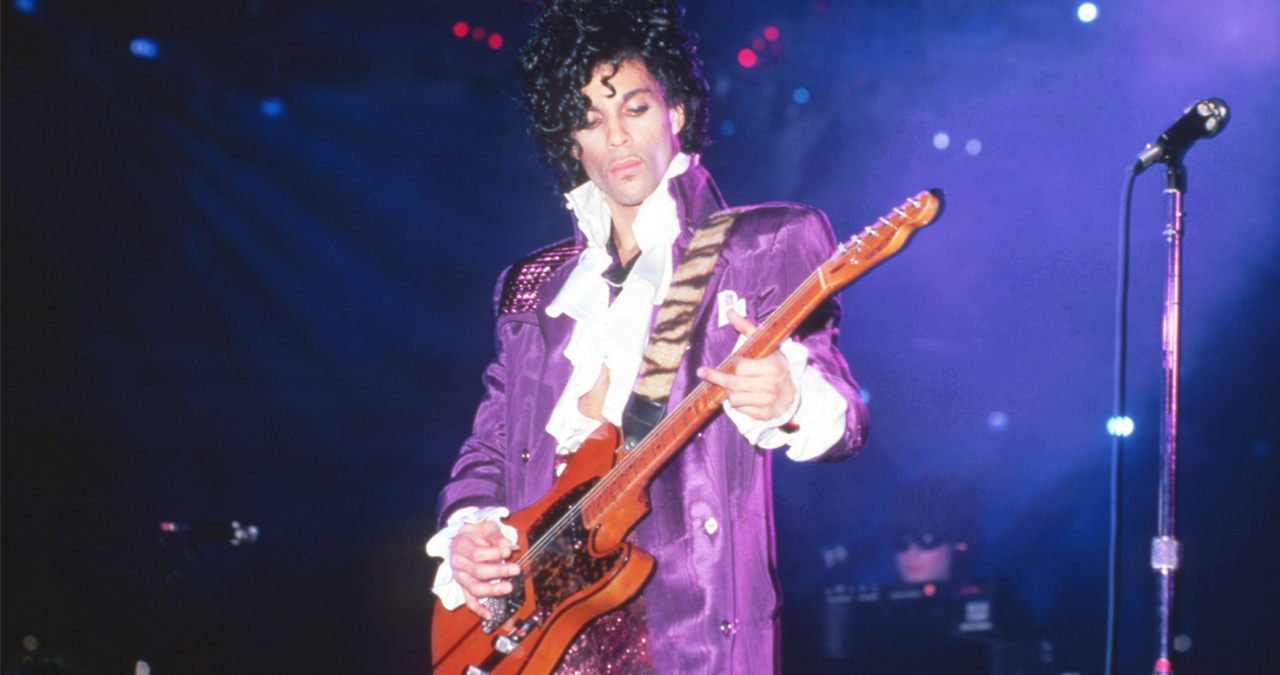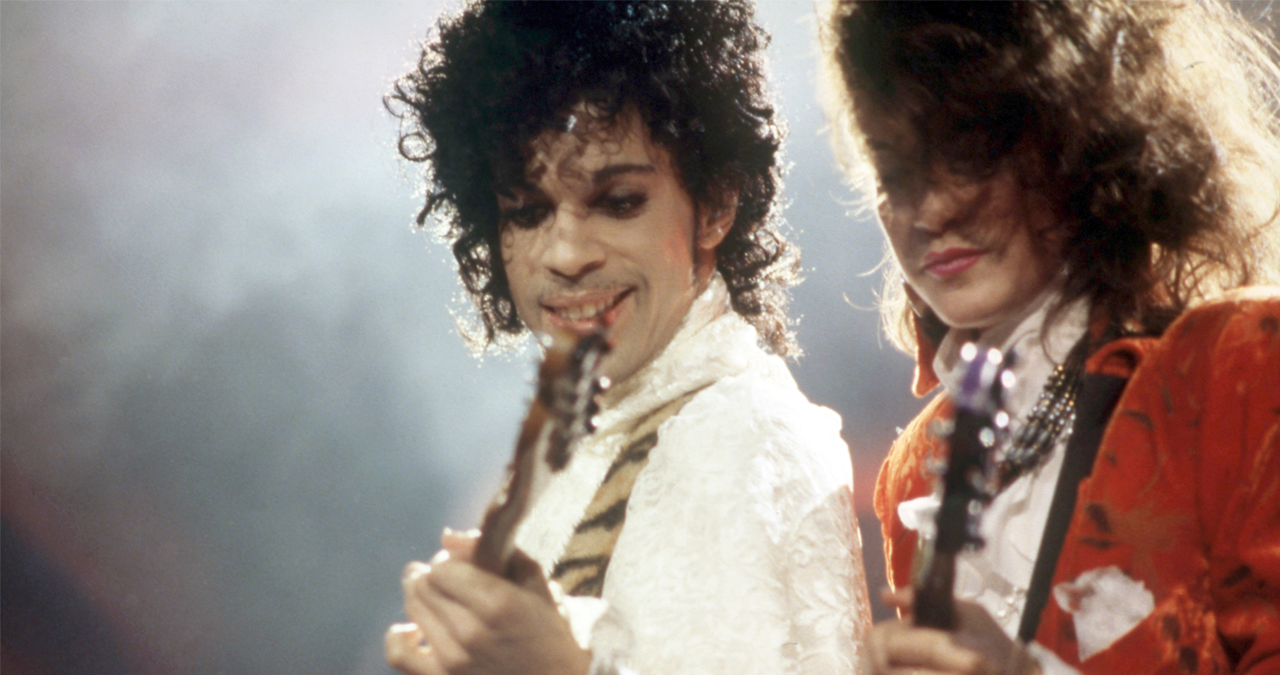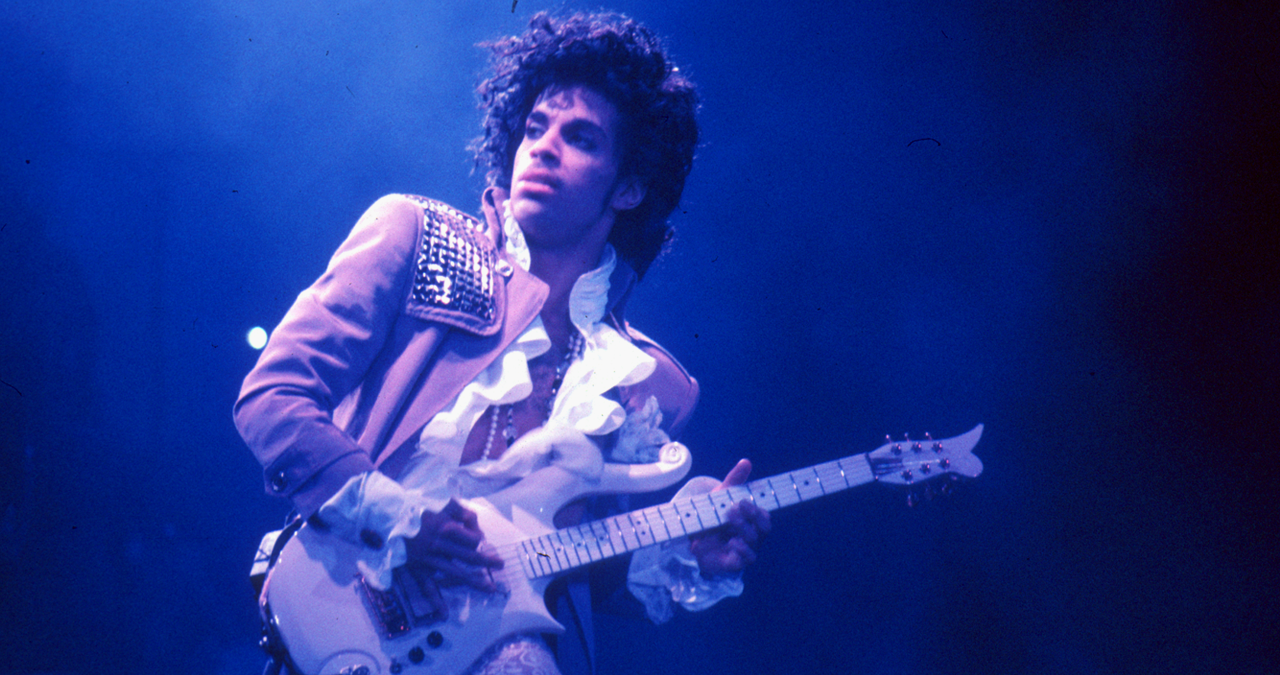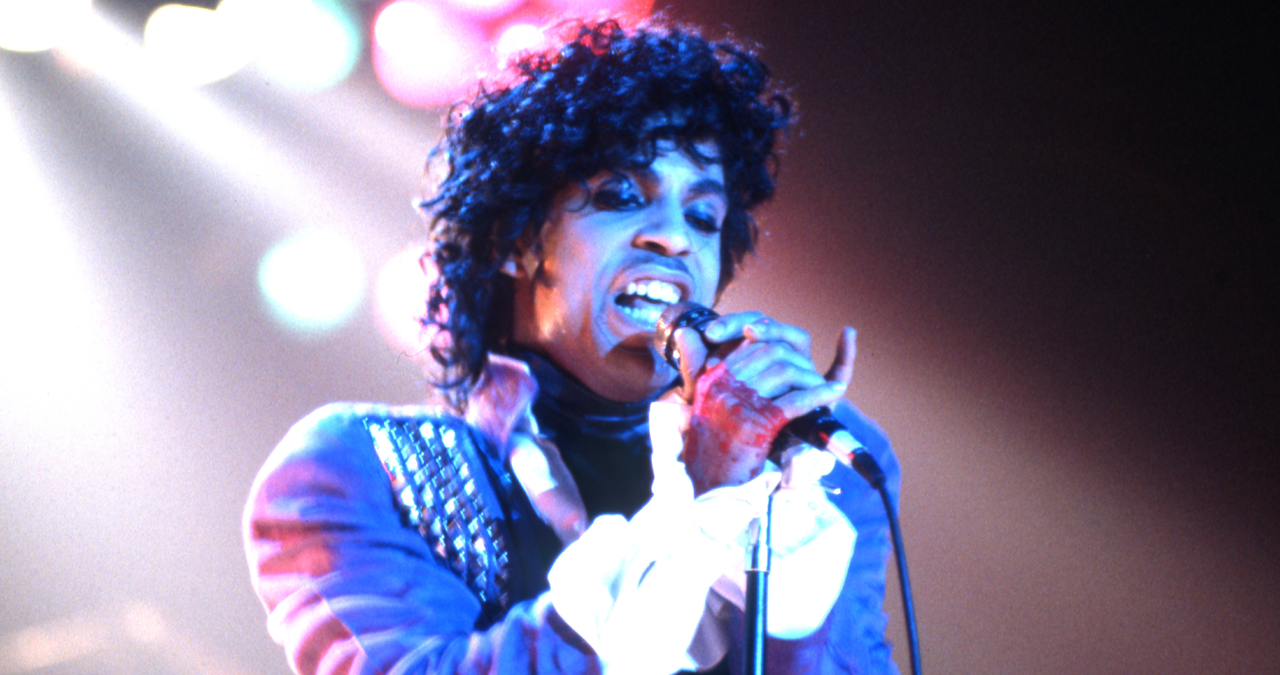“Prince was really excited and kept pumping us up, saying ‘We’re making history tonight’”: How Prince summoned one of the greatest guitar solos of all time from thin air
The heart-rending heights of Prince’s most affecting piece of music were conjured largely on the spot, during a now mythical performance

When planning out our direction for this series of ‘Magic Moments’ features, we set a rule that guitar solos specifically - even the truly majestic ones - shouldn’t be highlighted.
Our thinking went that pointing to an instrumental break would be simply spotlighting a fairly rote, expected arrangement section. Which was not this series' objective.
Really, we wanted to flag those odder about-turns that songs sometimes take. Reminding readers of those moments that lurch them away from the established foundations and push them into a new frontier.
But there was that one utter feat of guitar-wrought majesty that we just couldn’t get out of our heads.
It drips with the otherworldly. And, in our minds, is the very definition of a magic moment.
As its brilliance is really nothing to with its virtuosity (even though the artist in question certainly had the chops) we decided that it was worth us relaxing our rules just a little…
Its eventual magnitude is imbued with more emotion than the majority of the more ambidextrous, meticulously-played solos that have been delivered by the pantheon of popular music's more orthodox players.
That’s because Prince’s Purple Rain solo is more than just the song’s guitar break.
Want all the hottest music and gear news, reviews, deals, features and more, direct to your inbox? Sign up here.
In the context of the song it serves a hugely dramatic function - it represents an unspeakable torrent of pain, passion and resilience in the face of a near-biblical day of judgement.
Oh, and did we mention Prince made it up on the spot?
The Song: Prince - Purple Rain
The Magic Moment: The gradual arrival of the emotive guitar solo at 3:48 and its growth into a towering feat of musicianship
The Origin
Though many of the melodic patterns and ideas that went into the Purple Rain solo had been previously explored in the studio, the dynamic journey and blistering intensity of Prince's on-record performance was all spontaneously delivered - and captured entirely live in during one breathtaking recording.
But let’s pull out a little.
1984’s Purple Rain album was Prince’s biggest success. The aesthetic and vibe of the album, film and its clutch of singles would define Prince like no other era.
While ‘proper’ Prince fans often bemoan the over-exposed cultural currency of Purple Rain, often citing 1986's vibrant Parade, or 1987’s sprawling Sign o' the Times as the superior listens, in our view Purple Rain sits at the very summit of Prince’s achievements. And, its title track ripples with near-tangible magic.
Originally written as a slightly experimental foray into the country world, the then-24 year-old Prince constructed a ten-minute foundation around a straightforward chord progression in Bb.
Played with a somewhat Willie Nelson-esque lilt, Prince was unsure of how to develop the initial sketch further. So, he did what we all do when faced with a creative impasse. He called Steve Nicks.
Prince had worked with Nicks on her solo hit Stand Back, and the two had often spoken of further collaborations.
Hearing the demo tape, Nicks was daunted by the prospect; “It was so overwhelming, that 10-minute track … I listened to it and I just got scared," Nicks told The Guardian. “I called him back and said, 'I can't do it. I wish I could. It's too much for me.' I'm so glad that I didn't, because he wrote it, and it became Purple Rain."
Working with his then-new guitarist (and former girlfriend of keyboardist Lisa Coleman) Wendy Melvoin in Minneapolis’ St Louis Park, the chordal structure was elevated to a higher plane.
Melvoin - toting her Rickenbacker 330, beautifully re-voiced the chords.

The light and shade within the chord sequence, which traversed a path through Bb, Gm, F and Eb, became - in the hands of Wendy - a looping drama in microcosm.
With added 9ths and a laddering picking pattern, the flow of Purple Rain's chords lurched from uncertainty (Bb) into gnawing pain (Gm), landing on a resolute footing (F) before squinting upwards at the glimmering flickers of sunlight (Eb).
The tone of Wendy’s liquid, chorus-washed Rickenbacker coursed with emotion. “When Wendy played those chords on guitar it changed his mind about what the song could be,” Coleman recalled in an interview for Prince: Inside the Purple Reign. “I remember his face: ‘How do you do that?’ It ignited him and the rest of us”.
The tonal contrast of Wendy’s lavish Rickenbacker chords with Prince’s own guitar of choice - then a maple Hohner Mad Cat Telecaster - was a happy accident.
When this writer spoke to Wendy about her decision to use a Rickenbacker in an interview for Guitar.com a few years back, Melvoin shared that there wasn’t anything in particular about the instrument that attracted her; “At the time they were offered to us. But then we played them and they ended up sounding really great against Prince’s guitar.”
With a musical foundation of such heft now established, a fittingly apocalyptic lyric was penned by Prince.
Part confessional paean to a lost love and part rejoicing at a coming (purple-tinted) rapture, in his words Prince atones to his former lover for his past misdeeds.
As the lyric develops, he implores that he always had nothing but positive intentions - and that he only wanted to see his partner ‘laughing’ and ‘bathing’ in the 'purple rain'.
The semi-religious imagery of 'purple rain' invokes baptism, renewal and the ultimate dissolution of sin at judgement day. Married to the inspired chord sequence, this was suitably profound imagery.
This portentous subtext was stressed when Prince stated in an interview; “When there’s blood in the sky - red and blue equals purple. Purple rain pertains to the end of the world and being with the one you love and letting your faith/god guide you through the purple rain.”
In an unused part of this writer's interview with Wendy and Lisa back in 2022 for that Guitar.com piece, Wendy shared a personal anecdote of these sessions - and alluded to another figure who heard the developing song long before anyone in the outside world…
“We had this rehearsal hall, like a warehouse, and this homeless woman was parked outside the front of it [on a bike]. She was just listening through the door [sat] on her bicycle,” Wendy recalled.
“I remember Prince coming to rehearsal one day and asking ‘who's that out there?’ We told him ‘she's just been there for a few days. She's just listening through the door’”.
Wendy continued, “Prince went out there and made her come in and sit right in front of us while we performed Purple Rain. We often wonder whatever happened to her.”

As the already excellent-sounding album was being finalised, Prince chose to debut - and record - the title track and two other cuts (I Would Die 4 U and Baby I’m A Star) live during a benefit show for the Minnesota Dance Theatre at the newly christened First Avenue club on August 3rd 1983.
At the time it was somewhat shabby, but the venue would later become a place of regular pilgrimage for Prince-ites, particularly due to its prominence in the Purple Rain movie.
Not only was this Wendy’s inaugural live performance, but it was during this show that Purple Rain’s transcendent solo first took shape.
With a recording truck rented from New York’s Record Plant set-up outside the venue (and helmed by engineer David Z), everything was in place to track the evening’s performance.
At the time though, nobody quite knew what the reason for recording the show would be.
Prince’s keyboardist, Dr. Fink assumed that Prince was taping it just for his own library, and didn’t know that these live versions would end up on the album.
As Lisa recalled in an interview with The Guardian, “Prince was really excited and kept pumping us up: [saying] 'We’re making history tonight.' It all makes sense now: if you’re going to record something, make sure you’re as badass as you can be. Don’t fuck around.”
While Prince had cycled through various guitar freak-outs and melodic ideas in the studio during various run-through and rehearsals of the song, it was this evening’s particularly expressive performance that would shatter all previous attempts.
Rather than just launch into a hyper-complex demonstration of his musicianship and canter through the Bb major scale, Prince instead begun the song's lead part in a restrained manner. Eeking out subtle bends and proto-licks. Prince assuredly built pace as each bar progressed with gradually rising flurries of energy.
Prince knew precisely what he was doing - teasing the audience. Then watching in astonishment at this phenomenal new song was being performed for them, Prince readied them for the full release of one of the most astounding guitar parts in the instrument's history.
Prince's carefully balance tone also played a part. With the bass rolled off and the presence increased, the suitably flame-tinged licks were infused with a Boss DS-1 distortion pedal running out of a Mesa Boogie Mark IIB.

The iconic whirlwind signature riff was concocted live by Prince - it established a solid home motif to which he could return as he soared into the higher reaches of the neck. The assembled crowd looked in astonishment on as Prince took flight.
To all watching - from audience, to band, to sound crew - it was clear something quite special had just happened.
As the song had yet to be laid down in the studio, matching the brilliance of this successfully taped live version would be near-impossible to replicate.
And so, despite a few trims to the song's lengthier intro (and its entire third verse) and the addition of a few overdubs (a light smattering of strings and some more defined bass), the version of the song that appeared on the album was the very recording of the performance that had left jaws agape back at First Avenue that summer's night. Including its spontaneous solo.
Why It's Brilliant
I mean, just listen to it.
Prince’s Purple Rain solo remains a consistently affecting piece of music. Even after countless listens. It stimulates something deep in the listener, following an earned journey through its verses and choruses.
In thematic terms, it’s the apex of the song’s end-of-days allusion. The solo stimulates the mind's eye. It provokes the to visualisation of epic-scale imagery: The ground giving way on our protagonist and his lost love as they tumble entwined into the fiery core of the earth, or a more resolute image of them standing firm against a rising tidal wave…
Whatever your preferred quasi-biblical image, the expressivity of the solo invites you to paint it. To feel it.
It also underlines Prince’s uniquely genius approach to guitar playing. While he certainly could solo with the best of them (better, in some cases), it was this more thoughtful approach, coaxing and tempting out the delicacies of the music, before landing on that rotating central motif, and squalling into the higher registers that reveals Prince's genuine gift for the instrument.
It's not about impressing with fast-paced technical ability, it's about using his instrument to articulate the precise emotion of the song. It's an approach that sometimes means control and moderation - but also results in onslaughts of full-blooded power.
It’s a solo that is bewitchingly contradictory. It’s both flamboyant yet measured, passionate yet guarded and rage-fuelled yet deeply sorrowful.
Communicative beyond words in a way that only music - in the hands of the most genius of musicians - can be, Purple Rain is perhaps the song for which Prince is most famous, and certainly the one which underscores his musical fortitude like few others.
It was the title track of the record (and film) that launched Prince to global fame, selling more that 25 million copies and dominating both 1984, and arguably the decade.
For Prince himself, the track would loomed heavily over his career.
“In some ways Purple Rain scared me,” Prince said to The Guardian. “It’s my albatross and it’ll be hanging around my neck as long as I’m making music.”

I'm Andy, the Music-Making Ed here at MusicRadar. My work explores both the inner-workings of how music is made, and frequently digs into the history and development of popular music.
Previously the editor of Computer Music, my career has included editing MusicTech magazine and website and writing about music-making and listening for titles such as NME, Classic Pop, Audio Media International, Guitar.com and Uncut.
When I'm not writing about music, I'm making it. I release tracks under the name ALP.
You must confirm your public display name before commenting
Please logout and then login again, you will then be prompted to enter your display name.
